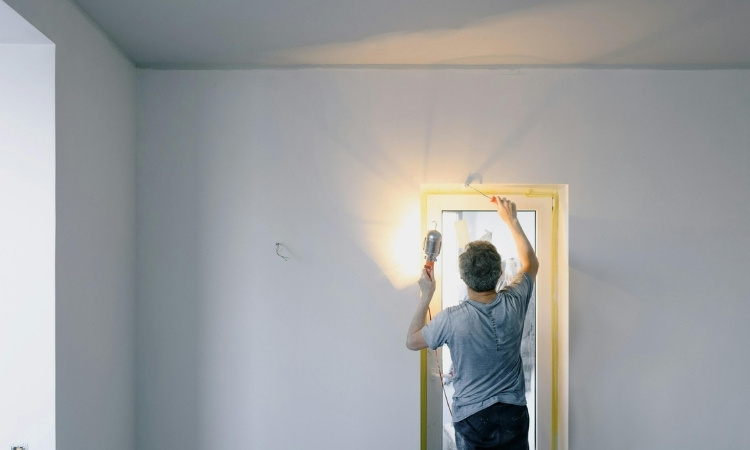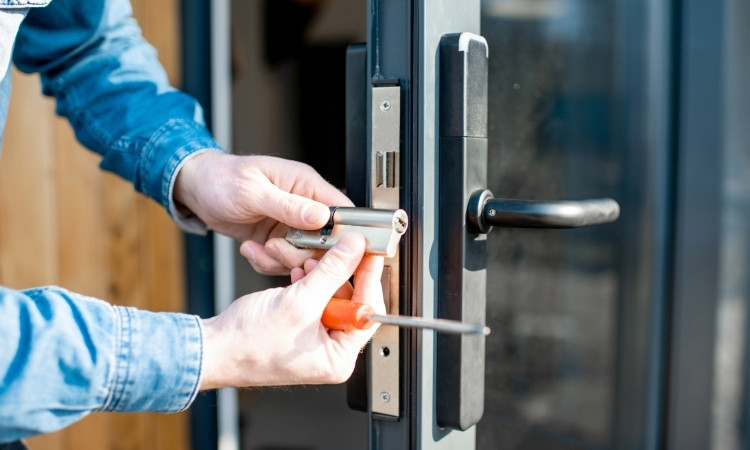Repair a noisy toilet door in Singapore now before it gets you or your family up the wall. The squeaking, rattling, or screeching of a toilet door may sound like an apocalyptic echo throughout a flat. In compact Singapore housing, particularly in HDB apartments and smaller condominiums, every sound seems to be amplified. When your bathroom door begins to make those annoying noises, it does not only disrupt your peace. It becomes an everyday annoyance.
This how-to guide offers an easy, practical approach to repairing a noisy toilet door using some basic tools, inexpensive supplies, and steps that align with popular doors found in Singapore. Whether it’s a PVC bi-fold door in your HDB or a sliding door in a condo bathroom, a simple fix can restore the peace you love in your space. Also, if you need professional assistance with services related to PVC toilet doors, Aluminium toilet doors, sliding toilet doors, etc., LS Toilet Door Singapore is your best choice.
Common Toilet Door Types in Singapore
Understanding the type of toilet door you have is the first step. In Singapore, most bathrooms have:
- PVC bi-fold doors; are popular in HDB flats for their space-saving design.
- Sliding doors; are found in newer condos or minimalist homes.
- Aluminum-framed swing doors; are typically installed in older HDB flats.
- Wooden doors; are found in landed properties or older apartment units.
Each type can become noisy for different reasons, such as worn-out hinges, rusted rollers, or swollen wood due to Singapore’s constant humidity.
What Causes a Noisy Toilet Door?
Let’s break down the most common culprits:
- Dry or rusty hinges: Creaks are due to a lack of lubrication.
- Misaligned Rollers or Tracks: A frequent problem with all sliding and bi-fold doors.
- Loose Screws: When you do not tighten hinges and handles, they become noisy.
- Warped Door Panels: Wood and PVC may expand due to moisture, resulting in rubbing noises.
- Debris in Tracks: Sliding tracks get clogged with hair and dirt, resulting in resistance and noise.

Tools You’ll Need to Repair a Noisy Toilet Door
You don’t need fancy gear. Most of these tools are affordable and available at local hardware stores, such as Selffix and Horme, or on online platforms like Lazada and Shopee.
- Silicone spray or WD-40
- Screwdriver (Phillips and flathead)
- Replacement hinges or rollers (optional)
- Clean cloth
- Small cleaning brush or old toothbrush
- A sponge or dry rag
- Adjustable spanner (if needed)
Step-by-Step: How to Repair a Noisy Toilet Door in Singapore
Step 1: Locate the Source of Noise
Open and close the toilet door slowly. Pay attention to the source of the sound. Is it the hinges? The top of the door? Is the bottom scraping the floor? Being aware of the source saves you time.
Step 2: Clean the Hinges or Tracks
Look at the roller tracks on the bi-fold or sliding toilet doors. Wipe off dust, hair, or grime with a brush or an old toothbrush. For hinge-type doors, use a cloth to clean the metal joints by wiping them to remove debris and moisture.
Local tip: Grime collects more quickly in a humid Singapore environment. Clean regularly to prevent the damage over time.
Step 3: Lubricate All Moving Parts
Apply silicone spray to hinges or rollers. Spray the lubricant lightly and move the door back and forth to spread it evenly. In the case of sliding doors, spray in on the track area and roll the door back and forth several times.
You should not use thick oil such as cooking oil or grease. It picks up more dirt. Use silicone spray because it works fine even in the sticky Singapore weather.
Step 4: Replace/Tighten Screws and Hinges
Make sure that screws on the hinges, door handles, and roller brackets are not loose. Secure them by tightening them using the right screwdriver. Change the rusted screws with stainless steel screws to avoid future rusting. When the hinge or roller is broken or crooked, go to a hardware store and get a duplicate of it.
Step 5: Adjust the Door Position
Your toilet door might be scraping against the ground or not aligned, so you might need to realign it.
- For swing doors: Loosen the hinges slightly, adjust the position, and re-tighten.
- For sliding doors: Lift the door slightly and adjust the rollers. Most roller brackets have screws that let you raise or lower the door.
This step often solves the issue of grinding or squeaky noises caused by friction with the frame or floor.

When to Call a Professional for Noisy Toilet Door Repair in Singapore
Sometimes, DIY just doesn’t cut it. Call a professional if:
- The door is swollen or warped and won’t close properly.
- Hinges or rollers are damaged beyond repair.
- The frame is loose or misaligned.
- You’ve tried fixing it, but the noise returns.
Local handyman services in Singapore typically charge $40 to $80 for simple toilet door repairs. Many of them offer same-day service, especially in central or mature HDB estates.
Conclusion
You no longer have to put up with annoying sounds, repair a noisy toilet door, and bring silence back to your bathroom. Whether it is a squeaky hinge or a sticky roller, routine care can help a great deal. The weather conditions in Singapore and the housing design tend to make toilet door noises more noticeable, but you can learn to effectively deal with it.
Through these simple steps and with the appropriate tools, you can repair a noisy toilet door and avoid costly repairs later. When a complex issue requires attention, do not be afraid of hiring a professional to work on it. Given proper attention, your toilet door can swing open and shut like a breeze.

